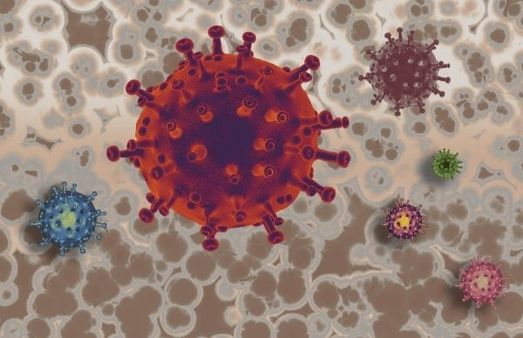Just In
- 10 hrs ago

- 11 hrs ago

- 14 hrs ago

- 14 hrs ago

Don't Miss
- Sports
 IPL 2024: SRH vs RCB Award Winners, Man of The Match, Post-Match Presentation, Scorecard & Records
IPL 2024: SRH vs RCB Award Winners, Man of The Match, Post-Match Presentation, Scorecard & Records - Movies
 TRP Report Week 16: Anupamaa, Jhanak BEAT Yeh Rishta Kya Kehlata Hai, Ghum Hai. Top 10 Shows List
TRP Report Week 16: Anupamaa, Jhanak BEAT Yeh Rishta Kya Kehlata Hai, Ghum Hai. Top 10 Shows List - Finance
 2:15 Bonus: Tata Group's Penny Stock Below Rs 90, Gives 2,821% Returns In 5 Years: Announces Q4 Report Card
2:15 Bonus: Tata Group's Penny Stock Below Rs 90, Gives 2,821% Returns In 5 Years: Announces Q4 Report Card - News
 MEA Dismisses US Human Rights Report On Manipur As 'Biased And Misinformed'
MEA Dismisses US Human Rights Report On Manipur As 'Biased And Misinformed' - Automobiles
 Royal Enfield Unveils Revolutionary Rentals & Tours Service: Check Out All Details Here
Royal Enfield Unveils Revolutionary Rentals & Tours Service: Check Out All Details Here - Technology
 Elon Musk’s X Is Launching a TV App Similar to YouTube for Watching Videos
Elon Musk’s X Is Launching a TV App Similar to YouTube for Watching Videos - Education
 AICTE introduces career portal for 3 million students, offering fully-sponsored trip to Silicon Valley
AICTE introduces career portal for 3 million students, offering fully-sponsored trip to Silicon Valley - Travel
 Escape to Kalimpong, Gangtok, and Darjeeling with IRCTC's Tour Package; Check Itinerary
Escape to Kalimpong, Gangtok, and Darjeeling with IRCTC's Tour Package; Check Itinerary
Rift Valley Fever: What Is RVF? Symptoms And Treatment; Can RVF Cause Another Pandemic?
The Rift Valley Fever (RVF) virus has been found in human cells, a virologist said; according to media reports WHO lists RVF as a priority disease likely to cause epidemics in the near future.
"The discovery by Dr Safder Ganaie and his colleagues was recently published in the journal Cell. Dr Ganaie and his team found that the Rift Valley Fever virus, spread by mosquitoes, enters human cells through a protein normally involved in mopping up low-density lipoproteins - the carriers of so-called 'bad cholesterol' from the blood," a news magazine reported [1].

What Is Rift Valley Fever?
Rift Valley fever is a viral disease, common in domesticated animals in sub-Saharan Africa, including cattle, buffalo, sheep, goats, and camels. RVF can be transmitted by contact with blood, body fluids, or tissues of infected animals or by mosquito bites. Transmission from person to person is not documented [2].
RVF virus (RVFV), a member of the Phlebovirus genus of the Bunyavirales order, causes the illness. In addition, people can be infected with some Bunyavirales viruses, such as hantaviruses and Crimean-Congo haemorrhagic fever (CCHF).

What Are The Signs and Symptoms of Rift Valley Fever?
Symptoms usually appear between two- and six days following exposure to RVFV, and several different disease syndromes can result. RVF is typically accompanied by either no symptoms or a mild illness, including fever, weakness, back pain, and dizziness [3].
In less than 1 per cent of patients, haemorrhagic fever results in shock, jaundice, and bleeding of the gums, skin, and nose. In addition, haemorrhagic fever has a fatality rate of about 50 per cent.
Symptoms of RVF last from 4 to 7 days, after which time the immune response becomes evident with the appearance of antibodies, and the virus vanishes from the blood. Patients usually recover within two to one week after experiencing symptoms.
Encephalitis affects less than one per cent of the population and results in inflammation of the brain, which may cause headaches, comas, or seizures [4].
One to three weeks after initial symptoms begin, eye lesions may appear along with blurred and decreased vision. The lesions usually disappear after 10 to 12 weeks. However, approximately 50 per cent of patients who suffer from an ocular disease will lose their vision permanently.

Severe Form Of RVF In Humans
However, a small percentage of patients develop a much more severe form of the disease. One or more of three distinct syndromes can occur: ocular (eye) disease (0.5-2% of cases), meningoencephalitis (less than 1% of cases) or haemorrhagic fever (less than 1% of cases).
The following are clinical features of the severe form of RVF in humans:
- Ocular form
- Meningoencephalitis form
- Haemorrhagic fever form
How is Rift Valley Fever Transmitted?
Human ailments are mostly caused by direct or indirect contact with infected animals' blood or organs. For example, humans can contract the flu from handling animal offal during slaughter or butchering, assisting with animal births, performing veterinary procedures, or disposing of carcasses or foetuses. Thus, certain occupations, such as herders, farmers, slaughterhouse workers, and veterinarians, are more susceptible to infection [5].
Also, this virus can infect people by inoculation, such as a wound from an infected knife or contact with torn flesh, or inhalation of aerosols created during the slaughter of infected animals.

How Is Rift Valley Fever Treated?
Rift Valley Fever does not have any FDA-approved medicines. Most RVF cases are minor and self-limiting, so RVF does not require specific treatment. Over-the-counter medications can treat symptoms such as fevers and body aches associated with minor illnesses. Most people recover within two to one week of the onset of their illness. More extreme cases may require hospitalisation, and treatment is usually restricted to supportive care [6].
Is Rift Valley Fever Preventable?
Here are a few steps that people can take to prevent infection if they live in or visit areas with RVF [7][8]:
- Avoid contact with infected blood, body fluids, or tissues. To avoid contact with infected blood or tissues, people working with animals in RVF-endemic areas should wear appropriate protective gear (such as gloves, boots, long sleeves, and a face shield).
- Don't consume unsafe animal products. It is recommended that all animal products (including meat, milk, and blood) be thoroughly cooked before consumption.
- Take precautions against mosquitoes and other blood-sucking insects. Use insect repellents and bed nets and cover exposed skin with long sleeves and long pants.

History Of Rift Valley Fever
In 1931, the virus was found in sheep on a farm in Kenya's Rift Valley during an investigation into an epidemic.
In sub-Saharan Africa, outbreaks have been reported since then. For example, in 1977, an explosive outbreak was reported in Egypt. The RVF virus was introduced into Egypt from the infected livestock trade and the irrigation system of the Nile [9].
Following the El Nino event and extensive flooding, a major outbreak occurred in Kenya, Somalia and Tanzania in 1997-98. Then, in September 2000, RVF spread to Saudi Arabia and Yemen due to livestock trade from the Horn of Africa, marking the first time the disease has been reported outside Africa and raising the possibility of it spreading to other areas of Asia and Europe.

Can RVF Cause Another Pandemic?
Even though a disease that affects farm animals may seem low risk, the US Centers for Disease Control and Prevention (CDC) has classified Rift Valley fever as a category A bioterrorism agent due to its potential to devastate large-scale agricultural economies and cause social disruption [10].
The Aedes mosquito can transmit Rift Valley fever, which has already spread across Europe and the Americas. A change in climate would encourage more mosquito species to colonise Europe and spread the illness.
People handling animals need to follow safe animal husbandry and slaughtering practices, and anyone consuming animal products, such as blood, milk, and meat, should ensure that they are properly processed or cooked. In addition, it is important to use insecticide-treated bed nets, use repellent, and avoid being outside during peak mosquito biting times to prevent mosquito-borne diseases.
Climate change and the shifting habitats of mosquitoes may pose the greatest pandemic risk, so climatic forecasting conditions likely to cause outbreaks and monitoring the spread of mosquito species will be essential. In addition, to prevent outbreaks from escalating into epidemics and pandemics, early warning systems are crucial.
-
 healthCommon Cold: Causes, Symptoms, Risks, Effective Remedies And More
healthCommon Cold: Causes, Symptoms, Risks, Effective Remedies And More -
 pregnancy parentingWhite Lung Syndrome: What Are The Symptoms Of The Disease Rampant In China? How Does It Spread?
pregnancy parentingWhite Lung Syndrome: What Are The Symptoms Of The Disease Rampant In China? How Does It Spread? -
 healthWorld HIV/AIDS Day: What Is The Difference Between HIV and AIDS?
healthWorld HIV/AIDS Day: What Is The Difference Between HIV and AIDS? -
 healthDoes This Everyday Cooking Ingredient Trigger Diabetes?
healthDoes This Everyday Cooking Ingredient Trigger Diabetes? -
 healthWorld AIDS Day: 3 Not So Common Ways HIV Can Spread from Person to Person
healthWorld AIDS Day: 3 Not So Common Ways HIV Can Spread from Person to Person -
 health5 Signs Your Kidneys Need Attention: Don't Ignore These Warning Signals
health5 Signs Your Kidneys Need Attention: Don't Ignore These Warning Signals -
 healthWorld Diabetes Day 2023: 3 Weird Things That Can Put You At Risk Of Developing Diabetes
healthWorld Diabetes Day 2023: 3 Weird Things That Can Put You At Risk Of Developing Diabetes -
 healthWorld Diabetes Day 2023: Daily Habits That Make One At Risk Of Diabetes
healthWorld Diabetes Day 2023: Daily Habits That Make One At Risk Of Diabetes -
 healthDengue 101: Causes, Symptoms, Risks, Complications, Treatment, Prevention, Diet And More
healthDengue 101: Causes, Symptoms, Risks, Complications, Treatment, Prevention, Diet And More -
 wellnessLung Cancer Awareness Month: Early Signs Of Lung Cancer In Men
wellnessLung Cancer Awareness Month: Early Signs Of Lung Cancer In Men -
 wellnessStomach Cancer Awareness Month: Is This Daily Habit A Cancer Trigger?
wellnessStomach Cancer Awareness Month: Is This Daily Habit A Cancer Trigger? -
 healthMan Dies After Eating Pasta Kept Outside Fridge: What Is Fried Rice Syndrome?
healthMan Dies After Eating Pasta Kept Outside Fridge: What Is Fried Rice Syndrome?


 Click it and Unblock the Notifications
Click it and Unblock the Notifications



